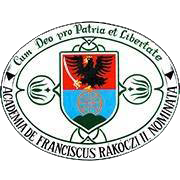Please use this identifier to cite or link to this item:
https://dspace.kmf.uz.ua/jspui/handle/123456789/2594| Title: | Розбудова радянської системи на території Закарпаття (1944–1946) |
| Other Titles: | The Establishment of the Soviet System in the Territory of Transcarpathia (1944–1946) |
| Authors: | Молнар Д. Єлизавета Yelyzaveta Molnar D. Molnár D. Erzsébet Молнар Д. Стефан Stefan Molnar D. Molnár D. István Олександр Добош Oleksandr Dobosh Dobos Sándor |
| Keywords: | Закарпаття;Закарпатська Україна;радянізація;адміністративно-територіальний устрій;назви населених пунктів;населення;терор;Transcarpathia;Transcarpathian Ukraine;Sovietization;administrative-territorial system;names of settlements;population;terror |
| Issue Date: | 2022 |
| Publisher: | НАН України, Інститут українознавства ім. І. Крип’якевича |
| Type: | dc.type.study |
| Citation: | In Україна: культурна спадщина, національна свідомість, державність. 2022. Випуск 35. с. 146-173. |
| Series/Report no.: | ;Випуск 35. |
| Abstract: | Резюме. Зазначено, що Закарпаття, створена в історичній Угорщині 1919 р. адміністративно-територіальна одиниця, що складалася з Ужанського, Березького, Угочанського та Марамороського комітатів, у першій половині XX ст. було частиною кількох державних утворень: у 1919 р. увійшло до складу Чехословаччини, у 1938–1939 рр. повернулося до Угорщини, а восени 1944 р. після радянської окупації було поглинуте Радянським Союзом. Простежено, що часті зміни влади через периферійність регіону відбувалися без урахування думки місцевого населення – внаслідок політичних рішень великих держав, тож закарпатцям завжди доводилося пристосовуватися до нових політичних систем. Визначено, що з-поміж історичних поворотів долі для місцевих жителів найтрагічніші наслідки мало входження до складу Радянського Союзу, адже до 1944 р. регіон і в суспільному, і в економічному, і в культурному розумінні був частинкою Центральної Європи, зокрема Карпатського басейну, натомість опісля став частинкою диктаторської імперії, що ґрунтувалася на класовому підході та соціальному безправ’ї. Проаналізовано й виснувано, що здобуття Закарпаття загальною площею 20 тис. км2 мало геостратегічне значення для радянської влади, оскільки завдяки географічному розташуванню межувало з кількома державами, що входили до радянського блоку, і через нього пролягали залізничні маршрути, які значною мірою полегшували логістику СРСР із ними. Встановлено, що поглинання регіону радянською владою зовсім не було легітимним, проте всемогутній радянський вождь Сталін, який впливав на політику держав у цій частині Європи, стежив за тим, щоби зберегти видимість легітимності під час окупації та подальшої анексії.
З’ясовано, що внаслідок зміни політичного режиму введено нову адміністративну систему, переглянуто найменування населених пунктів, змінився також етнічний склад регіону. Безсумнівним фактом визнано те, що для різних етносів, які проживали на Закарпатті, радянська анексія принесла низку індивідуальних і масових трагедій, оскільки зміна влади означала не тільки настання безправності, а й етнічні чистки та фізичне знищення для десятків тисяч осіб. Abstract. As noted, Transcarpathia is an administrative-territorial unit created in historical Hungary in 1919, consisting of Uzhan, Berez, Ugochan, and Maramoros counties. In the fi rst half of the 20th century, it was part of several states: in 1919, it became part of Czechoslovakia; in 1938–1939, it returned to Hungary, and in the fall of 1944, after the Soviet occupation, it was incorporated by the Soviet Union. The authors investigated that frequent changes of power due to the peripherality of the region took place without considering the local population’s opinion – as a result of the political decisions of the great states, so Transcarpathians always had to adapt to new political systems. Among the historical twists of fate for the residents, joining the Soviet Union had the most tragic consequences: until 1944, the region was a part of Central Europe, in particular the Carpathian Basin, in the social, economic, and cultural sense, but after, it became part of a dictatorial empire based on a class approach and social injustice. It was analyzed and concluded that the incorporation of Transcarpathia, with a total area of 20,000 km2, was of geostrategic importance for the Soviet authorities since, due to its geographical location, it bordered several states that were part of the Soviet bloc, and railway routes ran through it, which simplifi ed the logistics of the USSR with them. The incorporation of the region by the Soviet Union was not legitimate at all, but the almighty Soviet leader Stalin, who infl uenced the politics of states in this part of Europe, made sure to maintain the appearance of legitimacy during the occupation and subsequent annexation. As a result of the political regime change, a new administrative system was implemented, the names of settlements were revised, and the ethnic composition of the region also changed. As an undoubted fact stated that for various ethnic groups living in Transcarpathia, the Soviet annexation brought a series of individual and mass tragedies, as the change of power meant not only the onset of lawlessness but also ethnic cleansing and physical destruction for tens of thousands of people. |
| URI: | https://dspace.kmf.uz.ua/jspui/handle/123456789/2594 |
| ISSN: | 2223-1196 |
| metadata.dc.rights.uri: | http://creativecommons.org/licenses/by-nc-nd/3.0/us/ |
| Appears in Collections: | Dobos Sándor Molnár D. Erzsébet Molnár D. István |
Files in This Item:
| File | Description | Size | Format | |
|---|---|---|---|---|
| Molnar_D_E_Molnar_D_I_Dobos_S_Rozbudova_radianskoi_systemy_na terytorii_Zakarpattia_2022.pdf | In Україна: культурна спадщина, національна свідомість, державність. 2022. Випуск 35. с. 146-173. | 1.6 MB | Adobe PDF | View/Open |
This item is licensed under a Creative Commons License





